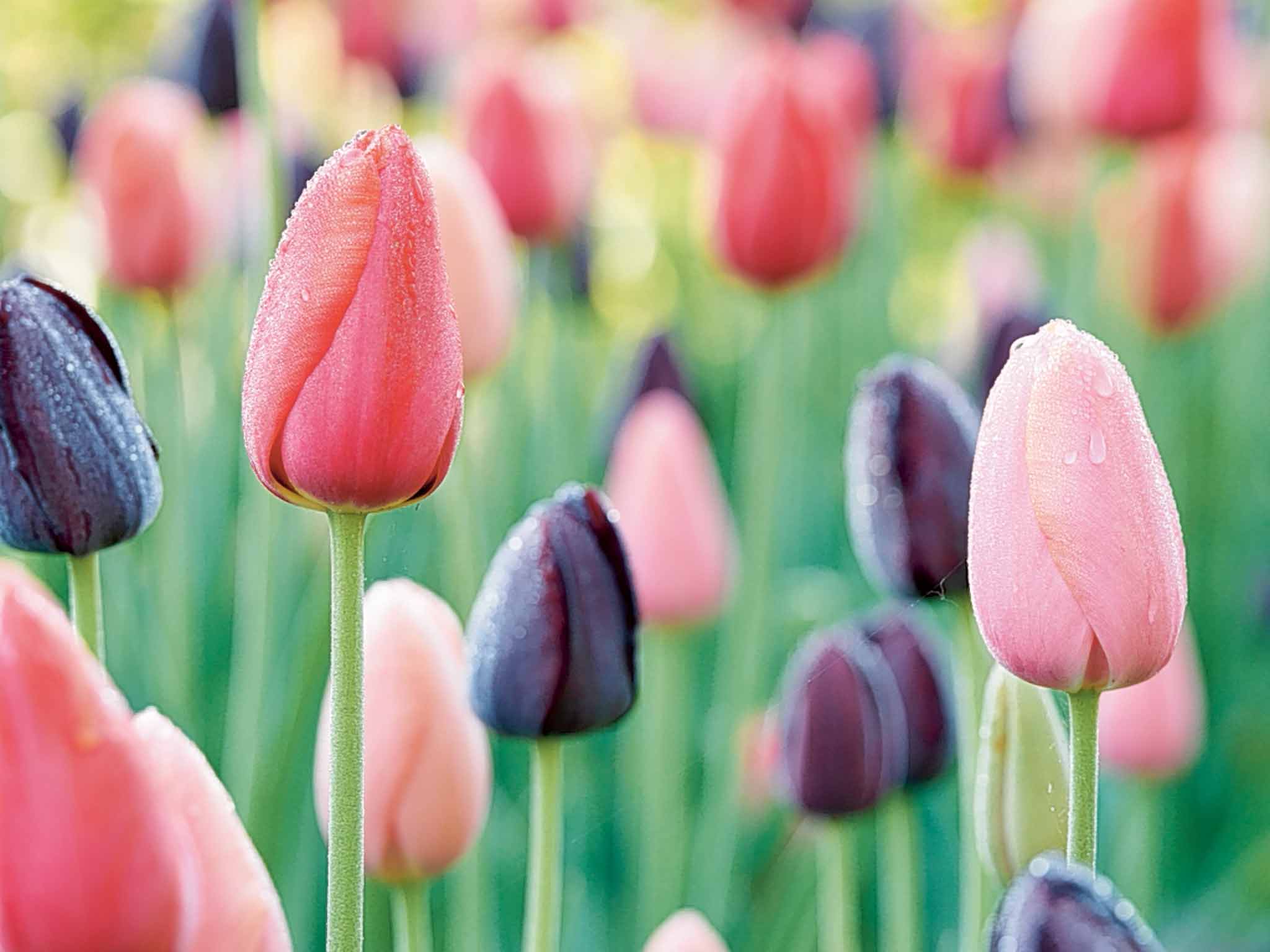Floral societies: Their special place in local life goes back centuries
Between 1750 and 1850, scarcely any town of note in the north of England was without its tulip society

When I first got to know him, Yorkshireman Bill Tear had already been growing tulips for 50 years. We met when he was preparing for a spring show at the Royal Horticultural Society's halls in Vincent Square, London. Mr Tear had come down on the coach from Normanton near Wakefield with 60 fine tulips wrapped in newspaper on his lap. By the time he had finished arranging his blooms for the competition the following day, it was almost 10 o'clock at night. He was showing several of my favourites: a wild red number called “Doorman” – it was splaying in a splendidly feckless way out of its prim green RHS vase – and the cottage tulip “Menton”, a tall robust flower of china rose, flushed with apricot.
Would he be around for the judging the next day, I asked? He didn't answer, but looked at me over the tops of his fluffed-out mutton-chop whiskers in a way that expressed far more than words. He already knew that his flowers were better than most others on the show bench and if the judges didn't agree then more fool them. He gathered up his reject blooms, thrust the astounding bunch into my arms and said that, after a cup of tea, he'd be walking back up Vauxhall Bridge Road to Victoria coach station where he'd catch the last bus back to Yorkshire.
I was remembering this meeting when I went to Bill's funeral, held last month in the crematorium in Pontefract. A joiner by trade, and an only son, he'd lived with his mother until she died, and never married. These circumstances meant there wasn't much family in the congregation. But there were quite a lot of tulip growers, many of them fellow members of the Wakefield and North of England Tulip Society, where growers gather each year to exhibit the English Florists' Tulip. These are no ordinary tulips. You can't buy them in any catalogue, nor will you ever find another society devoted to their culture.
All who compete for prizes at the Wakefield show would describe themselves as florists, using the word in its original 17th-century sense – people who devote themselves single-mindedly to the culture of a particular flower, who develop it by their own breeding to conform to a tightly laid-down set of rules and who enjoy showing their blooms in competitions which, in the past, were viciously contested. Only certain flowers were admired and cultivated by the florists. Anemones, carnations, ranunculus and tulips were their first loves. Then auriculas, hyacinths, pinks and polyanthus were added to the list.
Between 1750 and 1850, scarcely any town of note in the north of England was without its tulip society. In Ashton-under-Lyne, florists met at Mr Cock's aptly named Botanical Tavern. Stockport tulip-lovers convened at the Golden Ball and Florist Hotel in Millgate; in Leeds they met at the Golden Cock Inn at Kirkgate. The Halifax tulip society favoured the Shoulder of Mutton inn. The Wakefield Society was set up early in the 19th century and soon attracted a loyal band of members, many of whom were shoemakers, like Bill's father, Albert.
The Wakefield Journal reported an extremely successful annual show held on 29 May 1843 at the Royal Oak Inn, Wrengate, near Wakefield. “The members dined sumptuously in honour of the event,” wrote their correspondent, “and spent a pleasant day and evening.” Dining (and drinking) was an integral part of early florists' gatherings, as the societies were nearly always based in pubs. The show still goes on, and tulips are still staged in the traditional way in brown beer bottles. When most societies had their headquarters in pubs, the practice was both logical and prudent. Now shows are held in the sober surroundings of a village hall, but the florists still hang on to their bottles.
Flashes of contemporary life surface occasionally in the pages of the society's minute books: on 29 September 1932, the committee proposed “that our secretary Mr Hewitt be asked to attend the next meeting and explain his lack of interest in the Society's business”, but he never turned up. Someone was evidently throwing their weight around in 1945 when on 12 May the committee warned: “Members must act by the majority and let personal feeling stop... We have just fought a War for over five years and eight months to stop dictatorship.”
There was once a National Tulip Society but it never achieved its objective: to overcome the northern florists' natural assumption that they could grow better tulips than anyone south of Watford. Mr Tear's arrival at the London show (where he won seven firsts) was just his way of reminding southerners of this eternal truth. Nevertheless, next month I shall plant “Menton” in his memory.
Subscribe to Independent Premium to bookmark this article
Want to bookmark your favourite articles and stories to read or reference later? Start your Independent Premium subscription today.

Join our commenting forum
Join thought-provoking conversations, follow other Independent readers and see their replies